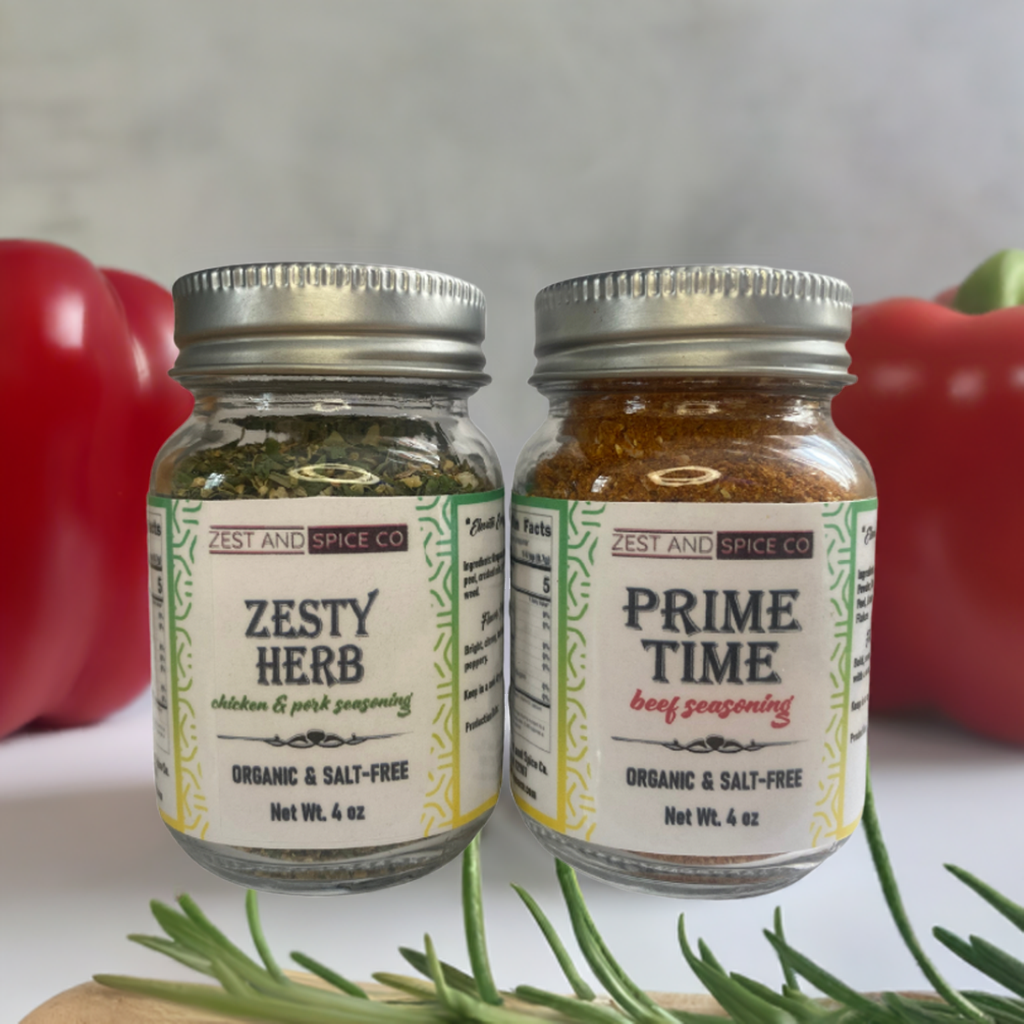
Are Seasoning Blends Healthy? What You Need to Know About Sodium and Additives
Share
Seasoning blends are a pantry staple for home cooks and professional chefs alike. They offer convenience, consistent flavor, and creativity in the kitchen. But with growing awareness around healthy eating, many people are asking an important question: Are seasoning blends actually healthy? The answer depends on what’s inside the jar.
In this post, we’ll break down how to read seasoning blend labels, why sodium and additives matter, and how to choose healthier alternatives—like salt-free, organic, or all-natural spice blends.
The Hidden Ingredients in Commercial Seasoning Blends
Many store-bought spice blends contain more than just herbs and spices. While some brands offer clean, quality ingredients, others load their blends with:
- Excessive sodium
- MSG (monosodium glutamate)
- Anti-caking agents
- Preservatives
- Artificial flavorings and colorings
These ingredients may enhance flavor and shelf life, but they can also pose health concerns—especially for those managing high blood pressure, heart disease, or dietary sensitivities.
Why Sodium in Seasoning Blends Matters
Sodium is a necessary mineral, but it’s easy to overconsume—especially when it’s hiding in unexpected places like spice mixes. The American Heart Association recommends no more than 2,300 milligrams of sodium per day, and ideally, 1,500 mg for most adults.
Some common seasoning blends can contain up to 300 mg of sodium per ¼ teaspoon—a surprisingly high amount when added to already-salty meals.
Tip: Always check the Nutrition Facts on the label. If sodium is listed, look at how much is in a serving and how much you’re likely to use.
What to Look for on a Seasoning Label
When shopping for healthy seasoning blends, reading the label is key. Look for:
- Short ingredient lists – made mostly of whole herbs and spices
- No added salt or clearly marked “salt-free”
- No artificial colors or flavors
- No MSG or chemical preservatives
- Certified Organic or Non-GMO labeling, if those matter to you
These clues help ensure you’re getting a cleaner, safer product.
The Benefits of Salt-Free Seasoning Blends
Salt-free seasoning blends are a fantastic way to add depth and flavor to meals without increasing sodium intake. They’re especially helpful for people with:
- Hypertension or cardiovascular concerns
- Low-sodium diets
- Kidney health concerns
Instead of salt, these blends rely on herbs, spices, citrus peels, seeds, and even ground mushrooms or nutritional yeast for umami-rich, bold flavor.
Many artisan brands now specialize in low-sodium or zero-sodium options, making it easier than ever to cook healthy and delicious meals.
Why Choose Organic or All-Natural Blends?
Organic and all-natural spice blends are made without synthetic pesticides, preservatives, or genetically modified ingredients. Choosing organic is important because:
- Spices are often imported and may be irradiated or treated with chemicals
- Organic certification ensures clean sourcing and production practices
- All-natural blends often contain no additives or fillers—just real, whole ingredients
Look for brands that prioritize transparency and sustainability in their ingredient sourcing and packaging.
Make the Switch to Health-Conscious Seasoning
If you’re trying to eat healthier, reduce your sodium intake, or avoid unnecessary additives, upgrading your seasoning blends is an easy and impactful step. Whether you’re seasoning vegetables, grilling protein, or cooking stews, a high-quality salt-free or organic spice blend makes all the difference.
Better yet, consider making your own blends at home using whole, organic herbs and spices you trust. That way, you know exactly what you’re putting into your body.
Final Thoughts
So, are seasoning blends healthy? They can be—when you know what to look for. By reading labels, choosing salt-free or low-sodium options, and prioritizing organic or all-natural ingredients, you can bring bold flavor to your meals without sacrificing your health.
Flavor should nourish—not harm.
